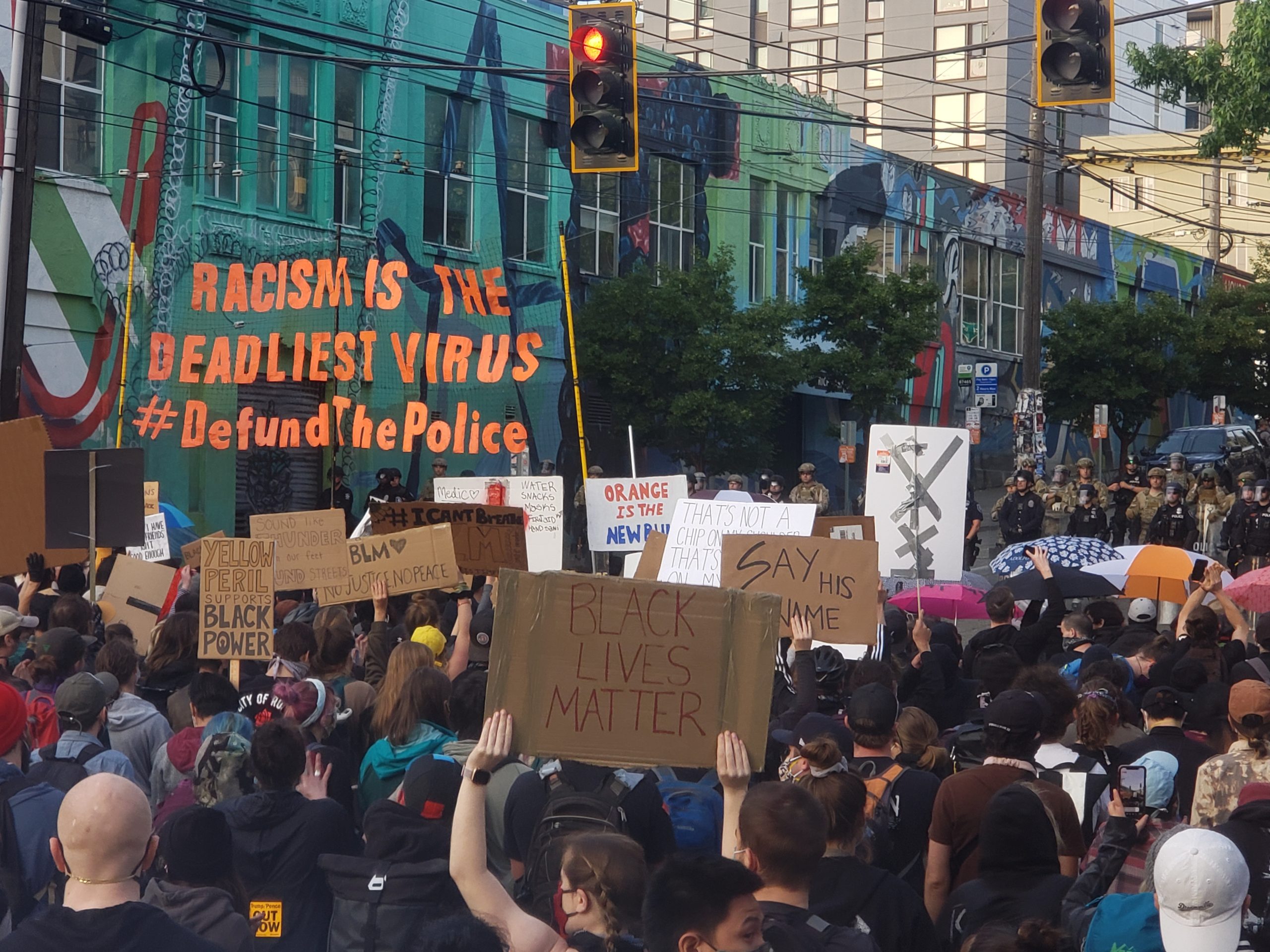
A crowd of protestors hold various signs, including “Black Lives Matter” and “Yellow Peril Supports Black Power.” “Racism is th Deadliest Virus” by Backbone Campaign is licensed under CC BY 2.0.
Social media is an important tool for social movements. Instagram, one of the most popular social media apps, is frequently used by activists to document events, spread political messages, solicit donations, and more. The authors of a new study argue that Instagram resembles a digital “community bulletin board.”
Turning back to 2020 and 2021, racial justice movements faced multiple crises. The murder of George Floyd by police officers in Minneapolis, Minnesota, triggered a worldwide upswell of racial justice protests. At the same time, political leaders and others in the U.S. associated the COVID-19 pandemic with Asian Americans, leading to a rise in hate crimes.
Focusing on this pivotal time, Rachel Kuo and Sarah Jackson examined how Black and Asian activists in two regions of the United States used Instagram to invoke memories of past struggles in order to articulate their visions for the future in their recent article. They collected social media posts by Black and Asian activist groups in the midwestern and southeastern United States and found that the activists emphasized historical memories of cross-racial solidarity in order to fight back against perceptions of Black-Asian conflict.
Despite its popularity, the authors say that relatively little research has been done on Instagram. In part, this is because Instagram’s image-based format makes it harder to analyze data in comparison to text-based social media. In addition, the authors say, Instagram is often stereotyped as being less “serious” than other platforms. The researchers argue that Instagram’s goal of helping people collect their personal memories to build a shared memory within social movements provides a unique opportunity for research.
As Black and Asian racial justice activists were confronted with multiple crises in 2020-21, they drew on memories of past moments of cross-racial solidarity among activists. For example, one post reinterpreted a slogan first developed in the 1960s: “Yellow Peril Supports Black Power.” Other posts highlighted the history of solidarity between Black and Asian activists, including meetings between activists and historic texts. Another talked about the friendship between Asian-American activist Yuri Kochiyama and Malcolm X, and still another promoted a reading list of texts about Black and Asian-American feminism.According to the authors, social media enabled activists to share information about the history of cross-racial solidarity outside of the traditional media. This independence empowered activists to emphasize solidarity against oppression over racial conflict. The researchers argue that, while lots of organizing still takes place in the real world, digital messaging enables activists to create and share new ways of understanding the world that aren’t dependent upon traditional media platforms.

Comments